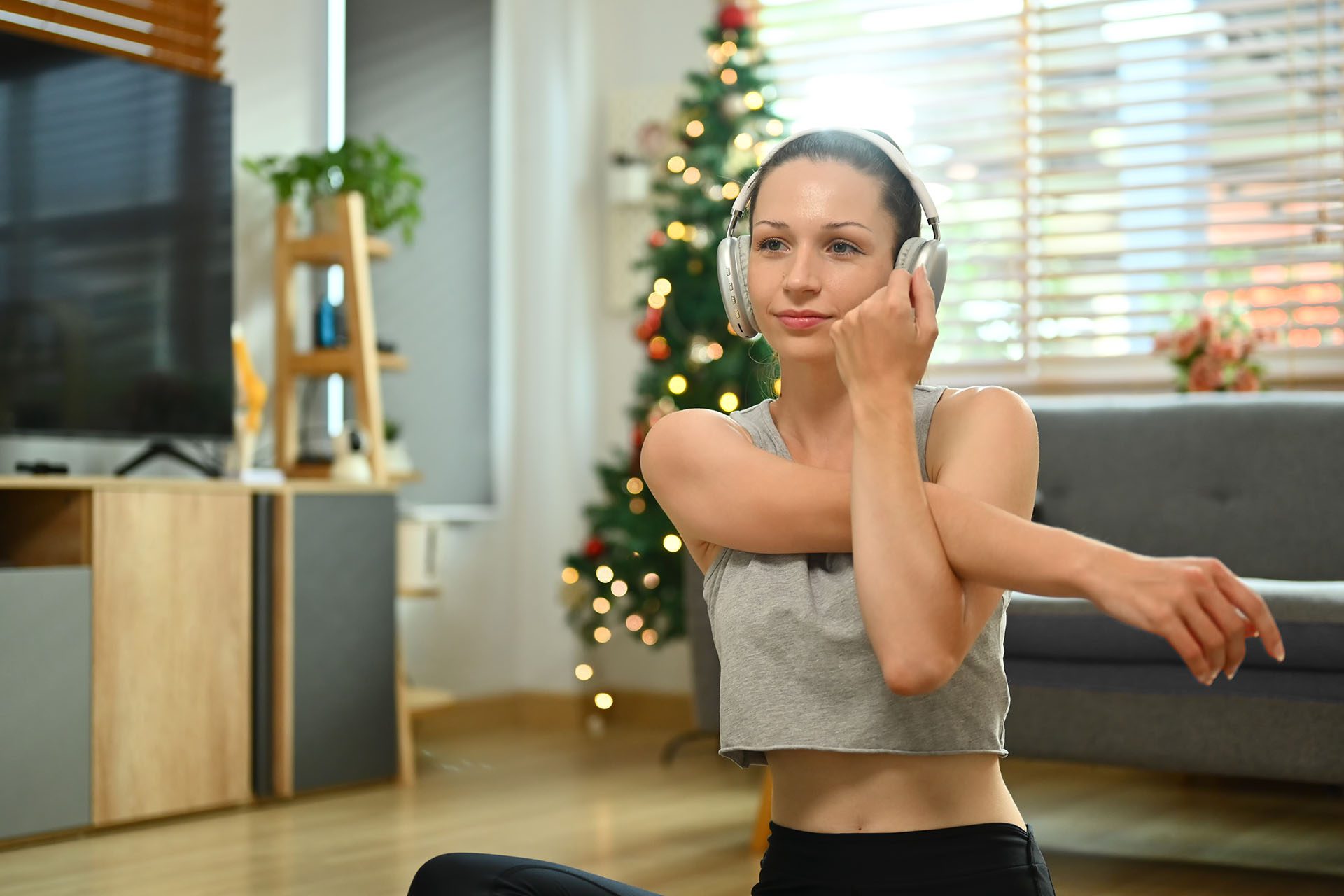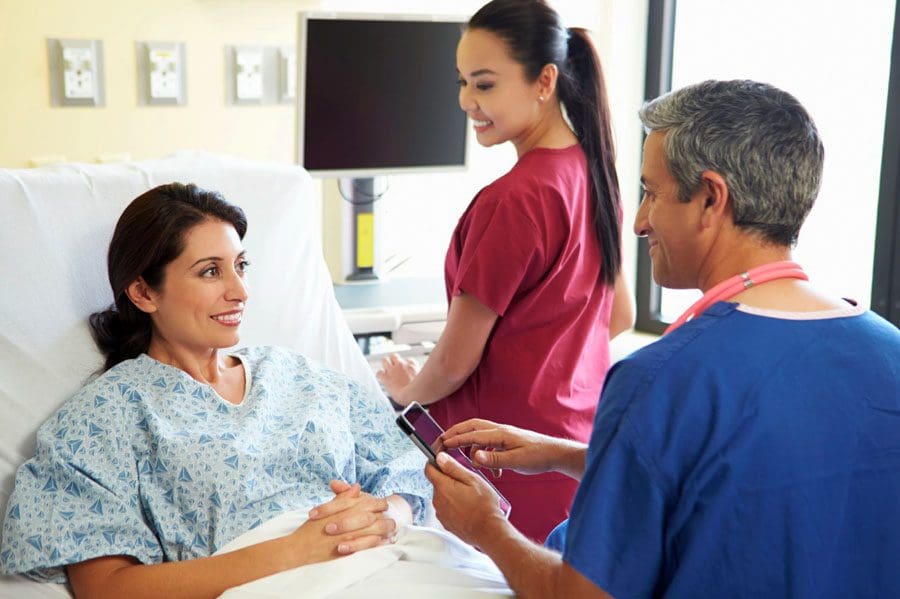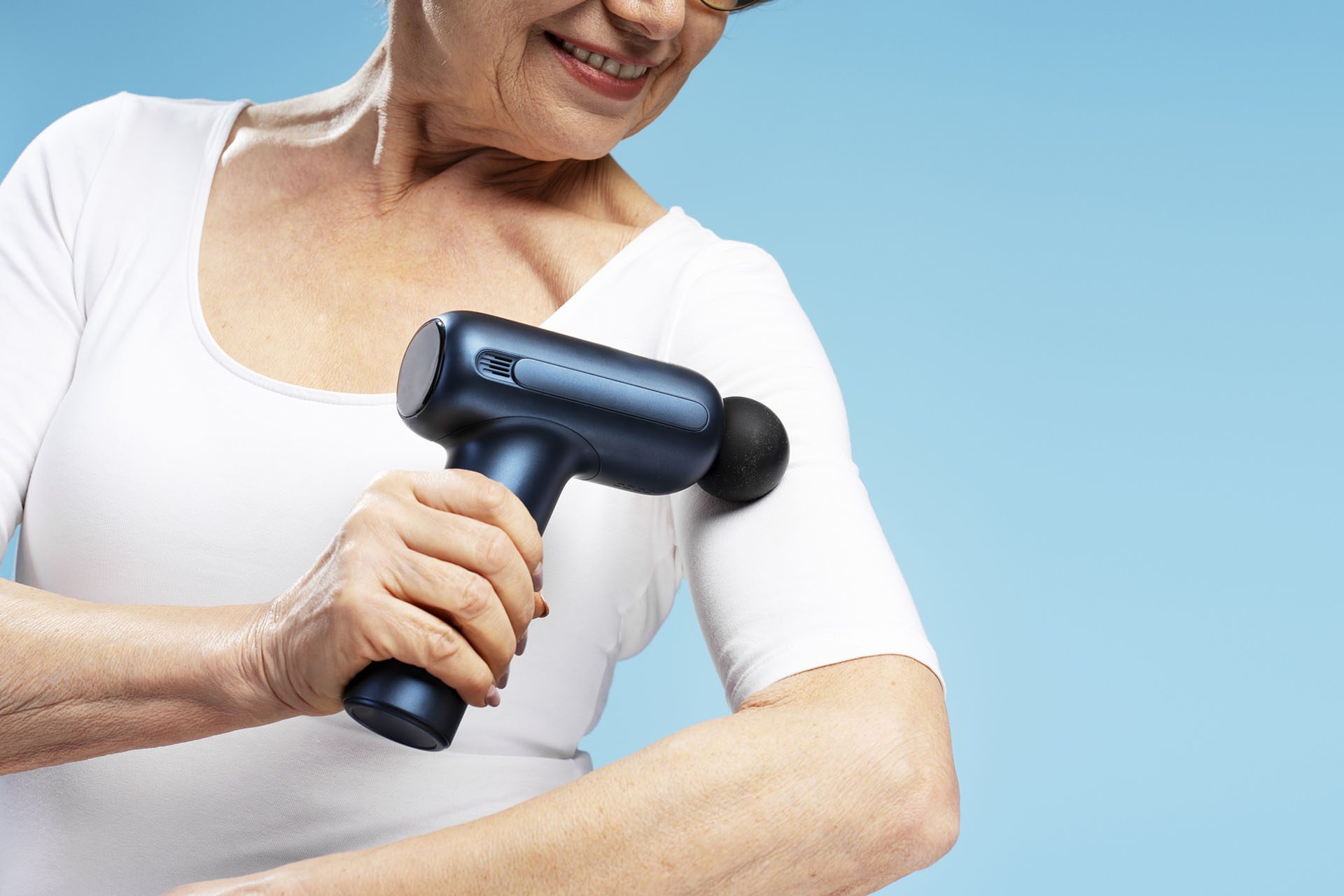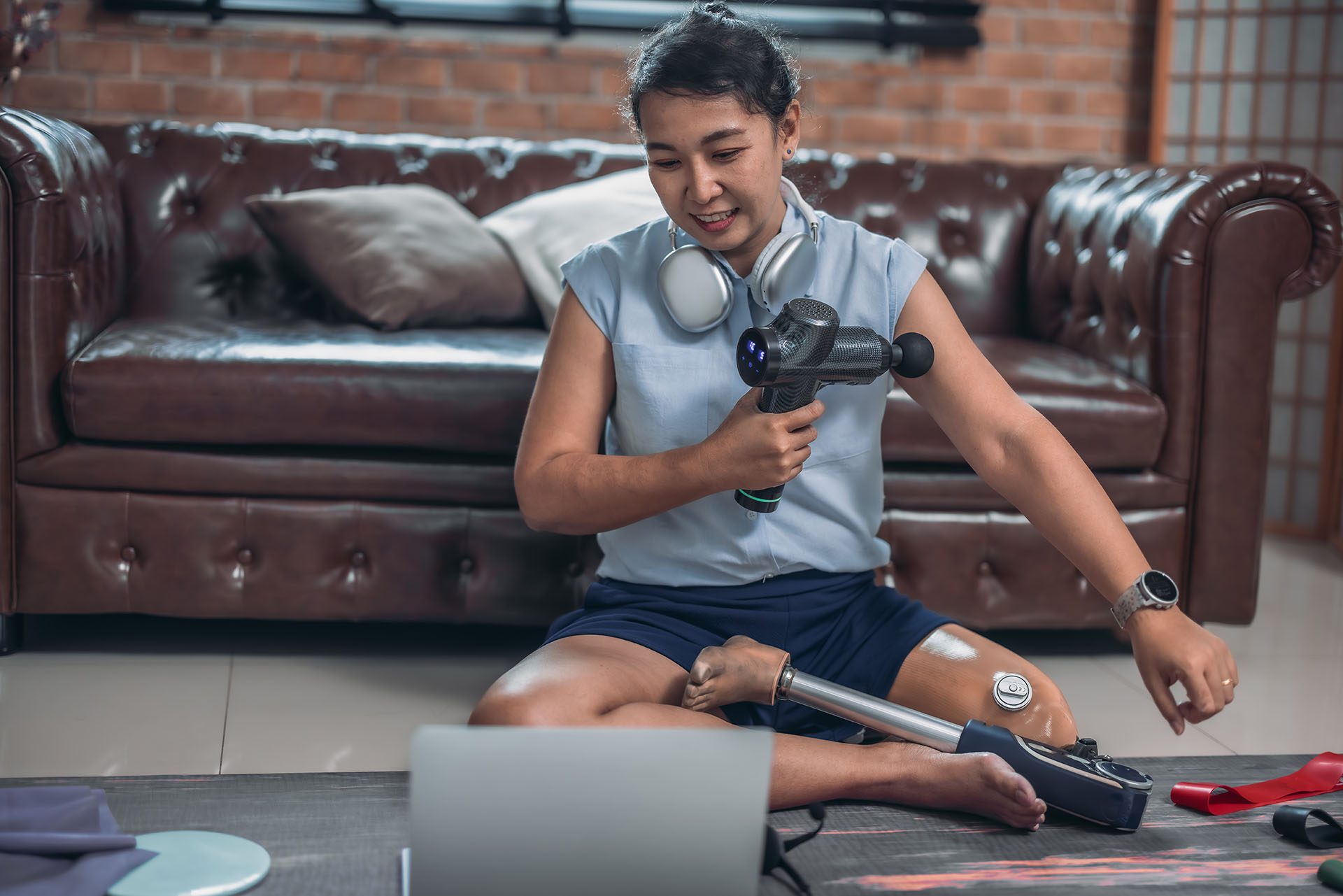Stay Safe This Christmas: Common Holiday Accidents

Prevention and Recovery at ChiroMed in El Paso, TX
The Christmas season in El Paso, TX, brings joy, family gatherings, and festive decorations. But it also comes with risks, such as falls from ladders or burns from cooking. These accidents can ruin the holidays. At ChiroMed – Integrated Medicine Holistic Healthcare in El Paso, TX, we help you understand these common issues and offer ways to prevent them. Our team, led by Dr. Alexander Jimenez, DC, APRN, FNP-BC, provides integrative care that combines chiropractic adjustments, nurse practitioner services, and holistic wellness to support recovery and health.
Understanding Common Christmas Accidents in El Paso
In El Paso, holiday accidents rise due to busy days, cold weather, and home decorations. Many people visit emergency rooms for injuries like falls or fires (U.S. Consumer Product Safety Commission, as cited in Santa Rosa Orthopaedics, 2023). Falls, burns, and cuts are frequent. Here are some common ones:
- Falls: These occur while hanging lights or on icy sidewalks. Around 160 decorating injuries happen daily, with many from ladder falls (Santa Rosa Orthopaedics, 2023).
- Fires: Dry Christmas trees and old lights cause fires. About 155 tree fires occur each year, leading to damage and harm (National Fire Protection Association, as cited in DBLF, 2023).
- Burns: Holiday cooking or hot ornaments lead to burns. Over 8,880 burn cases occur from decorations each year (William D. Shapiro Law, Inc., 2023).
- Cuts: Wrapping presents or handling broken glass ornaments can cause cuts. About 6,000 people are treated for gift-opening injuries (Relias, 2023).
- Strains and Sprains: Lifting heavy gifts or shoveling snow strains backs. Snow-related issues send 11,500 people to hospitals annually (Relias, 2023).
- Alcohol-Related Incidents: Parties with drinks lead to slips or fights. One-third of holiday crashes involve alcohol (Relias, 2023).
- Food Poisoning: Poor food handling affects millions. Holidays see more from bad storage (Relias, 2023).
- Toy and Gift Injuries: Kids can choke on small toy parts, with over 251,700 toy injuries in one year (Relias, 2023).
- Distracted or Drunk Driving: Crowded El Paso roads and parties spike crashes. December has high drunk driving rates (We Can Help Law, 2023).
These issues lead to over 80,000 UK hospital visits during Christmas, and similar trends are observed in the US, including in El Paso (St John Ambulance, 2023). Decoration injuries alone cause 18,400 emergency trips (We Can Help Law, 2023).
Causes of Holiday Injuries in Our Community
In El Paso, injuries often stem from rushed activities. Decorating causes falls and shocks from ladders and wires (D’Amore Law Group, 2023). Cooking can lead to burns and knife slips during big meals (Elite Learning, 2023). Overexertion from carrying boxes hurts backs (Pomona Valley Health Centers, 2024). Accidents like slips on ice or car wrecks rise with winter weather (TorkLaw, 2023).
- Decorating Risks: Worn-out or damaged lighting can cause shocks or fires. Unstable ladders lead to falls (Jon Bramnick, 2023).
- Cooking Hazards: Hot oils and sharp tools cause burns and cuts. Grease fires are common (We Can Help Law, 2023).
- Overexertion Issues: Lifting without proper form strains muscles. Use your legs, not your back (Pomona Valley Health Centers, 2024).
- Other Accidents: Driving while distracted or drunk is risky on El Paso streets. Icy paths cause slips and falls (Clark Fountain, 2023).
Studies show injuries increase after Thanksgiving, often from simple tasks (Journalist’s Resource, 2023).
Prevention Tips for Safe Holidays in El Paso
At ChiroMed in El Paso, TX, we stress prevention to keep your season merry. Check lights for damage (TorkLaw, 2023). Use sturdy ladders with help (UCLA Health, 2023). In the kitchen, wear mitts and turn handles inward (Elite Learning, 2023). For driving, arrange sober transport (William D. Shapiro Law, Inc., 2023).
Key tips include:
- For Falls: Salt icy El Paso walkways. Secure cords to prevent trips (Victoria ER, 2023).
- For Fires: Keep trees watered. Choose safe decorations (Jon Bramnick, 2023).
- For Burns and Cuts: Cook carefully. Cut away from yourself (UCLA Health, 2023).
- For Strains: Lift with knees. Get assistance for heavy items (Santa Rosa Orthopaedics, 2023).
- For Alcohol and Driving: Drink moderately. Use ride shares (Haffner Lawyers, 2023).
- For Food Safety: Monitor food dates. Refrigerate leftovers quickly (St John Ambulance, 2023).
- For Toys: Select age-appropriate gifts. Supervise small parts (TorkLaw, 2023).
These steps reduce risks, letting you enjoy El Paso’s holiday spirit.
How ChiroMed’s Integrative Care Helps with Recovery
If an injury occurs, ChiroMed – Integrated Medicine Holistic Healthcare in El Paso, TX, offers natural healing. Our integrative approach pairs chiropractic with nurse practitioner care for complete wellness. Adjustments ease spinal and joint pain from falls or strains (Knecht Chiropractic, 2023). Massage, physiotherapy, and naturopathy address muscle problems. Our NPs provide nutrition advice and manage conditions.
Dr. Alexander Jimenez, DC, APRN, FNP-BC, at ChiroMed, observes that holistic methods treat root causes. Our clinic at 11860 Vista Del Sol, Suite 128, uses adjustments, therapy, and personalized nutrition to address issues such as back pain and holiday stress (Injury Specialists, 2023). He notes misalignments from lifting disrupt nerves, but adjustments restore function. For rich holiday meals, we offer dietary guidance to avoid digestive woes (Injury Specialists, 2023).
Our services bring:
- Pain Relief: Adjustments reduce neck and back discomfort from overexertion (Fletcher Family Chiropractic, 2023).
- Improved Mobility: Therapy aids recovery from slips or sprains (Orenda Chiropractic, 2023).
- Immune Support: Holistic care boosts defenses against seasonal ills (Knecht Chiropractic, 2023).
- Stress Reduction: We ease tension from busy holidays (Fletcher Family Chiropractic, 2023).
- Nutrition Help: NPs guide diets to counter food poisoning or overeating (Injury Specialists, 2023).
Dr. Jimenez’s dual expertise allows us to blend chiropractic and medical care, reducing reliance on drugs and speeding healing (LinkedIn, 2023). At ChiroMed, our team provides rehabilitation and wellness plans tailored to El Paso residents.
Long-Term Wellness and Prevention at ChiroMed
ChiroMed’s care goes beyond recovery—it’s about ongoing health. Regular adjustments maintain alignment, preventing strains (Orenda Chiropractic, 2023). Our NPs screen for issues like poor immunity. Dr. Jimenez uses advanced tests for custom plans, including nutrition and exercise (LinkedIn, 2023).
In El Paso, this means better handling of holiday foods and less stress (Knecht Chiropractic, 2023). We help with alcohol recovery by balancing the body. Our integrative services, including naturopathy and rehab, build a strong base for year-round wellness.
Conclusion
Christmas accidents, such as falls, burns, and strains, are common in El Paso but can be prevented with caution. If they happen, ChiroMed – Integrated Medicine Holistic Healthcare offers holistic recovery. Led by Dr. Alexander Jimenez, our team addresses pain, promotes wellness, and prevents future problems. Visit us at 11860 Vista Del Sol, Suite 128, or call (915) 850-0900 for safe, healthy holidays.
References
- ChiroMed. (2025). ChiroMed – Integrated Medicine Holistic Healthcare in El Paso, TX. https://chiromed.com/
- Clark Fountain. (2023). The most common injuries during the holiday season. https://www.clarkfountain.com/blog/the-most-common-injuries-during-the-holiday-season/
- D’Amore Law Group. (2023). What are the most common Christmas-related injuries?https://damorelaw.com/what-are-the-most-common-christmas-related-injuries/
- DBLF. (2023). Top Christmas injuries. https://www.dblf.com/blog/top-christmas-injuries/
- Elite Learning. (2023). 10 common holiday injuries and how to avoid them. https://www.elitelearning.com/resource-center/nursing/10-common-holiday-injuries-and-how-to-avoid-them/
- Fletcher Family Chiropractic. (2023). Why chiropractic care is your secret weapon for surviving the holiday season. https://fletcherfamilychiropractic.com/why-chiropractic-care-is-your-secret-weapon-for-surviving-the-holiday-season/
- Haffner Lawyers. (2023). Common accidents and injuries during the holidays. https://www.haffnerlawyers.com/common-accidents-and-injuries-during-the-holidays/
- Jon Bramnick. (2023). Common Christmas injuries and how to avoid them. https://www.jonbramnick.com/blog/common-christmas-injuries-and-how-to-avoid-them/
- Journalist’s Resource. (2023). Seasonal holiday injuries: A research roundup. https://journalistsresource.org/home/seasonal-holiday-injuries-a-research-roundup/
- Knecht Chiropractic. (2023). Top reasons chiropractic care helps through the holidays. https://www.knechtchiro.com/blog/Top-Reasons-Chiropractic-Care-Helps-Through-the-Holidays.html
- Orenda Chiropractic. (2023). Holiday stress relief: How chiropractic care can help you stay calm and healthy. https://orendachiro.com/holiday-stress-relief-how-chiropractic-care-can-help-you-stay-calm-and-healthy/
- Pomona Valley Health Centers. (2024). Holiday safety: Protecting yourself during this busy season. https://www.pvhmc.org/blog/2024/november/holiday-safety-protecting-yourself-during-this-b/
- Relias. (2023). 12 holiday mishaps. https://www.relias.com/12-holiday-mishaps
- Santa Rosa Orthopaedics. (2023). Keep your holidays merry: How to avoid common holiday accidents. https://srortho.com/news/keep-your-holidays-merry-how-to-avoid-common-holiday-accidents/
- St John Ambulance. (2023). Tinsel trauma: Hazardous Christmas statistics. https://www.sja.org.uk/course-information/blog/tinsel-trauma-hazardous-christmas-statistics/
- TorkLaw. (2023). Top 5 most common accidents during Christmas holidays. https://www.torklaw.com/safety/top-5-most-common-accidents-during-christmas-holidays/
- UCLA Health. (2023). 7 common holiday injuries and accidents and how to avoid them. https://www.uclahealth.org/news/article/7-common-holiday-injuries-and-accidents-and-how-to-avoid-them
- Victoria ER. (2023). Holiday injury prevention tips. https://victoriaer.com/holiday-injury-prevention-tips/
- We Can Help Law. (2023). The most common Christmas accidents. https://wecanhelp.law/blog/the-most-common-christmas-accidents/
- William D. Shapiro Law, Inc. (2023). 5 common holiday injuries and safety tips. https://wshapiro.com/5-common-holiday-injuries-and-safety-tips/



















